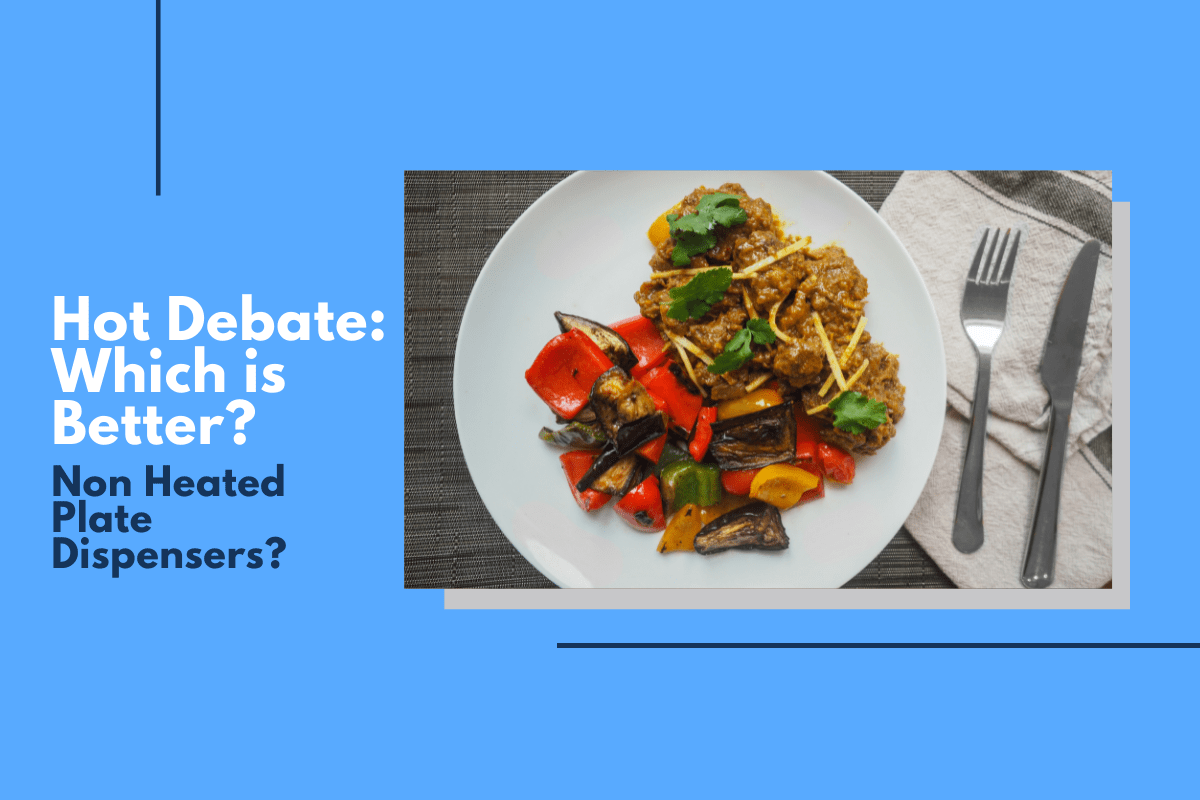
Hot Debate: Which is Better, Heated or Non-Heated Plate Dispensers?
To heat or not to heat. That’s often the question foodservice operators face when they’re looking to build out banquet serving lines, upgrade corporate cafeterias, or even enhance school foodservice capabilities in K-12 settings or on college campuses. And the debate is whether to offer plates that are heated or dispense them from a non-heated plate dispenser at ambient temperatures.
So, when should you use a heated plate dispenser? There are a handful of reasons that make the most sense as it relates to using a heated plate dispenser versus a non-heated option, and we’ll walk through those one-by-one now.
Are you serving hot food?
Think about your own, personal dining experiences when plate dispensing was involved. Unless you’re going to the salad bar, grabbing a cold plate and filling it with hot meats and vegetables can decrease the perception of the service. Research shows that using a heated plate dispenser can help elevate that perception, while at the same time keeping warm foods at temperatures that are more desirable for diners. Simply put, if you’re serving hot foods, you probably don’t want to serve them on ice-cold plates.
Are you serving food in a cold environment?
Sometimes the ambient room temperatures might be cold or potentially unstable, which can then impact the temperatures of food being served. Serving lines might also exist in outside areas or spaces exposed to the elements. By using a heated plate dispenser, the potential for external temperatures to impact the temperature of foodservice is diminished.
Are you looking to save costs?
As you might expect, heated plate dispensers costs more than those without heating elements and the ability to warm china. That being said, saving on plate dispensers could actually wind up costing more if food quality or safety leads to food waste. If there’s any potential for serving warm foods or serving foods when external temperatures could impact service, it’s almost always advisable to choose a plate dispenser with heating elements. If plates will be used only for cold food service such as salad bars, an operation could probably get away with using a non-heated plate dispenser.
Plate Dispensers: Other Considerations
Plate dispenser options can also include mobile or countertop units. Moveable food dispensers are more ideal for buffets because they can be transferred quickly to any space. Countertop dispensers are more ideal for cafeterias and restaurants as they tend to be more stationary.
Adjust-A-Fit dispensers allow for multiple plate sizes to be dispensed from the unit. Need one side for salad plates and one side for hot food dishes? No problem! Adjust-A-Fit heated double-wall cabinets allow you to adjust the height and the temperature for both dispenser tubes individually. The easy, non-stick glide design ensures smooth dispensing of your bowl or plate of choice.
